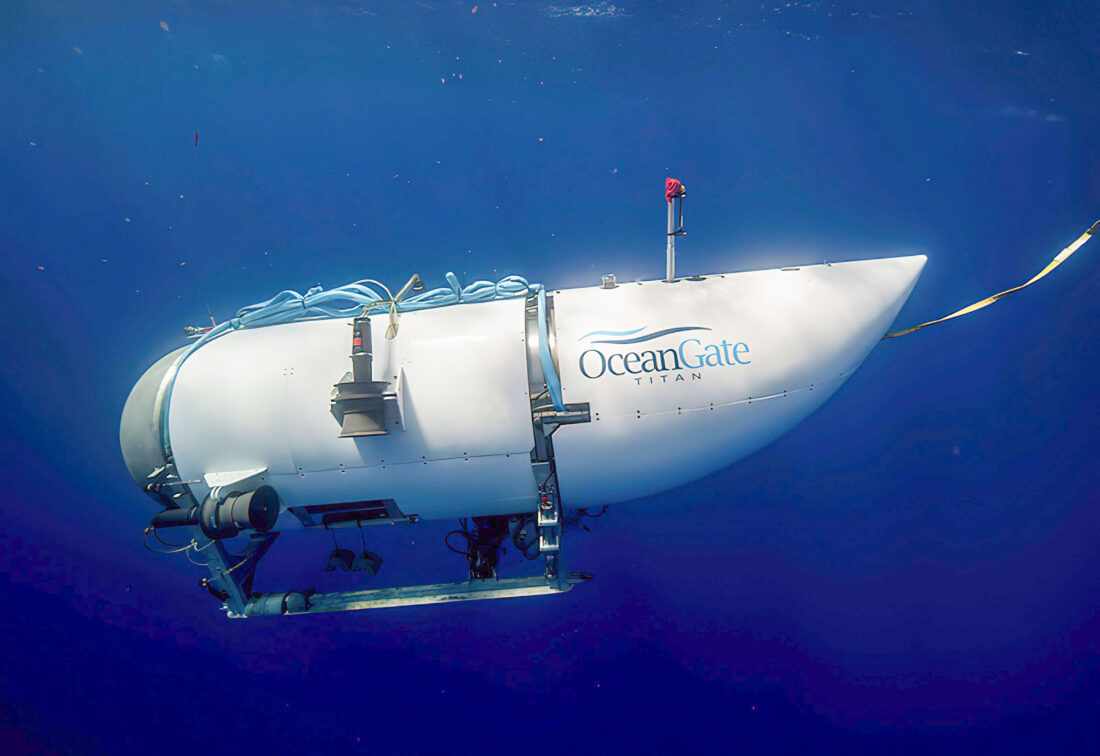
The disastrous fate of arguably one of the most talked about ship of the 20th century is not unprecedented: the Titanic, a mysterious yet unfortunate ship,met a tragic end. Who hasn’t wished to see the haunting wreckage of this iconic ship? And scientists are not the contrary. But exploring the harsh sea only expanded the tragedy. On the fateful morning of June 18, 2023, the world was shaken by the tragic implosion of the Titan submersible, a vessel designed to carry tourists to the depths of the Atlantic Ocean and explore the iconic wreck of the Titanic. The incident, which occurred during an expedition off the coast of Newfoundland, Canada, claimed the lives of all five passengers onboard, leaving a trail of grief and unanswered questions in its wake.
Among the victims were Stockton Rush, the CEO of OceanGate, the company that operated the Titan; Paul-Henri Nargeolet, a renowned French deep-sea explorer and Titanic expert; Hamish Harding, a British businessman; Shahzada Dawood, a Pakistani-British businessman; and Dawood's son Suleman. The loss of these individuals, each with their own unique contributions to society, sent shockwaves through the global community.
The Titan submersible, a carbon fiber and acrylic vessel capable of diving to depths of 4,000 meters, was designed to provide a unique opportunity for individuals to experience the grandeur of the Titanic firsthand. However, its maiden voyage to the wreck site proved to be its last, as the vessel imploded under the immense pressure of the deep ocean, shattering dreams and leaving behind a sea of sorrow.
On that fateful June day, the Titan departed from the OceanGate support vessel, the Titanic Survey Ship, at approximately 6:30 AM local time. It was scheduled to descend to a depth of approximately 3,800 meters (12,500 feet) to reach the Titanic wreck.
At around 8:45 AM, the Titan's support team received an emergency signal from the submersible. Communication was lost shortly thereafter, and attempts to locate the Titan were unsuccessful. A search and rescue operation was launched, and the wreckage of the Titan was eventually found at a depth of approximately 3,800 meters.
The National Transportation Safety Board (NTSB) launched an investigation into the incident, and the preliminary findings were released in October 2023. The NTSB determined that the Titan imploded due to a hull breach caused by a "catastrophic failure of the pressure hull." The exact cause of the hull failure remains under investigation.
The Oceangate incident has cast a shadow over the nascent industry of commercial deep-sea exploration, raising concerns about the safety of these ventures and the need for stricter regulations. The loss of the Titan and its passengers serves as a stark reminder of the inherent dangers of venturing into the depths of the ocean, a realm that remains largely unexplored and shrouded in mystery.
In the aftermath of the tragedy, OceanGate suspended all operations, pending a thorough review of its safety procedures and the implementation of necessary changes. The company has also expressed its deepest condolences to the families of the victims, acknowledging the profound impact of this loss.
The Titan tragedy will undoubtedly leave an indelible mark on the history of deep-sea exploration. It serves as a powerful reminder of the importance of safety, the need for rigorous testing and oversight, and the inherent risks involved in pushing the boundaries of human endeavor. While the quest to explore the depths of the ocean will undoubtedly continue, the Titan tragedy underscores the importance of proceeding with caution and respect for the vast and unforgiving forces of nature.
Written by Nure Zannat
Sources:
https://www.reuters.com
https://www.nbcnews.com
https://en.wikipedia.org





Write a comment ...